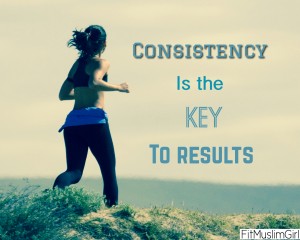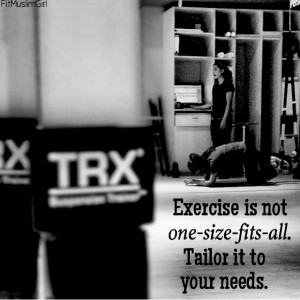The words “fitness,” “health,” and “dieting” are often associated with weight loss, although they do not apply only to those who want to drop pounds. Fitness and health refer to keeping the body and mind in a state where it can function optimally, and dieting is defined simply as the types of foods one eats, whether healthy or not-so-healthy.
Whether one wants to lose weight, gain weight or simply maintain their current state, these goals can all be reached through the fundamentals of a healthy diet and exercise.
1. Define your why
The first thing you want is to identify your why. Why do you want/need to gain weight? Some people are naturally thin and want to increase their weight, while others may be recovering from an eating disorder or other disease.
Do you want to put on muscle? Do you want to reach a healthier weight? Are you trying to overcome a bad relationship with food? Defining your reason will give your journey a purpose and thus make it more meaningful.
If you suffer from an eating disorder such as anorexia, bulimia, binge eating disorder, or any other medical condition, you should always consult a professional first. These are tips that are meant to be used as a general guideline.
2. Set small and realistic goals

Setting small and realistic goals can help you to stay on track without overdoing it. Acknowledge each goal you reach by giving yourself a reward.Gaining weight may not be as easy a task as it seems. Just as with weight loss, weight gain can be a slow process. Take everything step by step and rather than trying to reach one big goal, set small, reachable goals along the way.
Don’t try to go from eating 1200 calories to 2,500 in one day. Increase your calories slowly and overtime you will reach the larger goal.
Setting small and realistic goals can help you to stay on track without overdoing it. Acknowledge each goal you reach by giving yourself a reward.
For example, your goal might be to increase your calorie intake by eating 200 more calories everyday for a week. Once you hit this goal you might ask some friends out to dinner or go shopping and buy yourself the outfit you’ve been wanting. This will help you to stay motivated and keep going.
3. Supplementation
I’m not a huge advocate of supplements. Sure there are some out there that are great, and individuals who experience nutritional deficiencies can certainly benefit from supplementation. But in general a healthy individual can usually get what they need from their diet.
However, for individuals who are underweight supplements can be a great tool to start with until you build up your diet. For example, many people who are under-nourished often experience iron, potassium and calcium deficiencies.
I recommend getting a check up from your doctor to identify any nutritional deficiencies, if any. From there decide if you need to take any supplements until those levels get back to normal.
4. Exercise
To exercise or not to exercise? Depending on your starting weight, you may want to hold off. If your body is quite weak I would suggest starting with a few days a week of exercise. Definitely stay away from any high-intensity cardio as that burns a lot of calories.
I am a huge advocate of yoga as it is low-impact and works on strength, flexibility, relaxation and endurance all at once. Start with some easy beginners yoga workouts. If you’re not a yoga fan then start with some light weight-lifting and/or bodyweight exercises.
Once you’re body starts getting used to the extra calories you may feel your strength is improving as well as your energy-levels, sleep, skin, hair and mental state. Once you get to this point, maybe after about one or two months, you can begin to add to your workouts. Start to do more intense versions of yoga such as ashtanga yoga or power yoga, or begin lifting heavier weights.
Make sure you are still taking it slow and work your way up over time. It’s still a good idea to stay away from high-intensity training or long bouts of cardio.
5. Eat frequently
Eating frequently, about 5-6 meals a day will help ensure you are getting in enough food. There will be times when you don’t feel hungry but want to make sure you are eating enough calories. Eating every 3-4 hours is a great way to not only get all of your calories in but also to get your body used to eating regularly.
Here is a sample meal plan:
- Breakfast: 2 whole eggs, oatmeal with all natural nut butter, piece of fruit
- Snack: whole fat Greek yogurt, sprinkle of granola, some berries
- Lunch: lean beef, sweet potato, side salad
- Snack: handful of nuts with fruit
- Dinner: salmon, brown rice, vegetables
- Snack: glass of milk and a dark chocolate bar
6. Go for full-fat
In weight loss diets you are always hearing about “low-fat” “non-fat” and “sugar-free” options. Remove these words from your vocabulary for the time being and focus on full-fat yogurt, milk and cheese. If you enjoy juice go for the sugary variations rather than the chemically altered, sugar free drinks.
7. Healthy but dense foods
Although you want to nourish and repair your body with healthy foods, you always want to get the best bang for your buck. Choose healthy foods that are rich in calories and pack a lot of protein, carbohydrates and fats into a small amount.
Here are some options:
- Nuts and nut butters
- Healthy oil
- Dried and fresh fruit
- Starchy vegetables
For a quick and delicious snack make a homemade trail mix by combining some nuts, seeds, coconut flakes and dark chocolate chips.
A few last words
Weight gain will take time. The best advice I can give is to go slow and let the process happen with time. Listen to your body and never move onto a bigger goal until you’ve mastered the smaller one.
If you end up gaining a little too much weight, just cut your calories back by about 200 until you get where you want. You can also add in some HIIT training and cardio if too much weight gain occurs.





